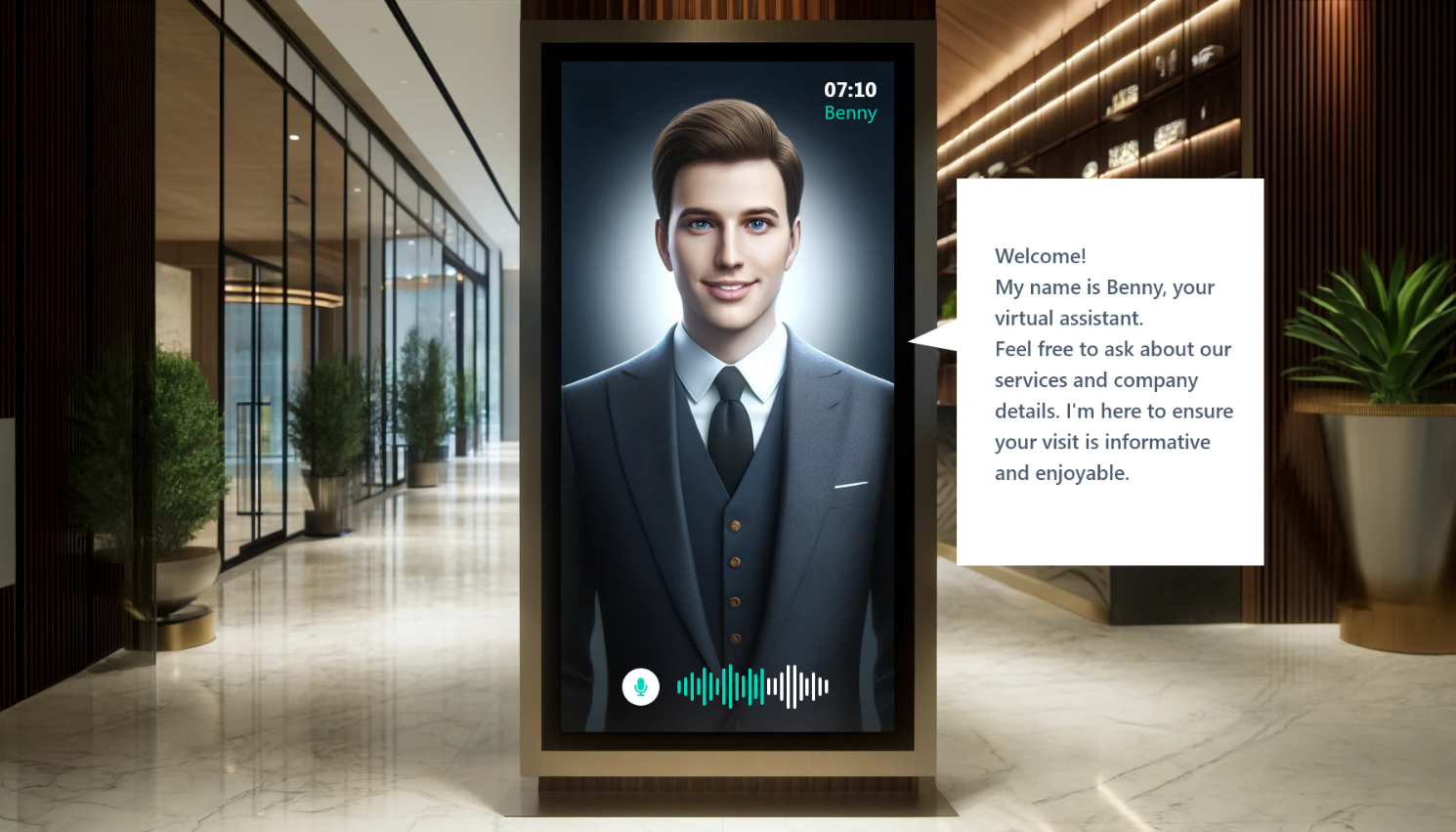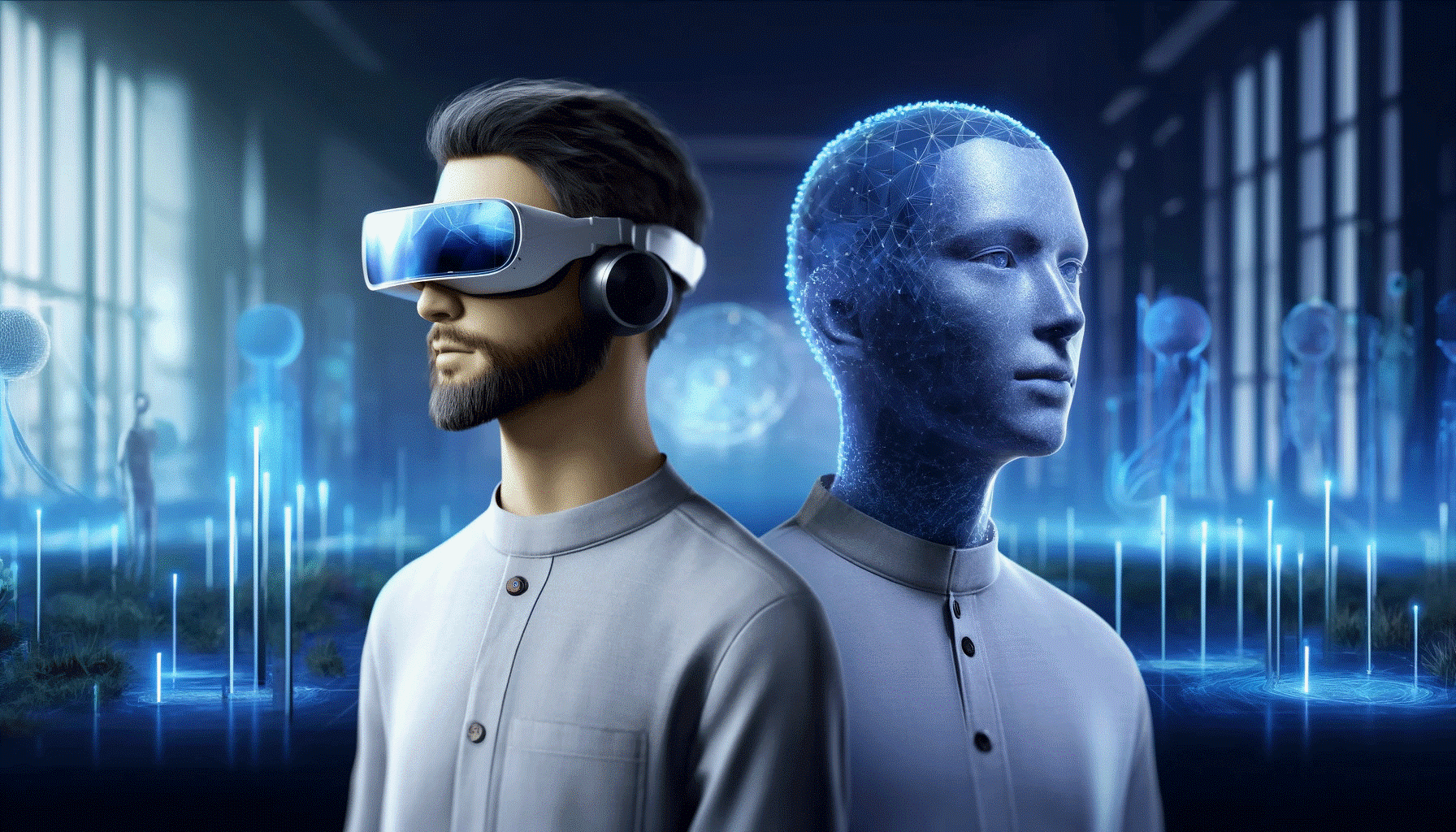AI Avatars: Bringing Digital Interactions to Life
In the realm of digital transformation, a transformation is on the horizon: Avatars powered by artificial intelligence are set to change our interactions and engagement with technology in the near future.
Our recent article discussed how, according to a study by Emergen Research, AI-based avatars are set to become standard in numerous industries by 2025. This shift is largely due to the development of sophisticated virtual avatars designed to authentically replicate human interactions.
They merge advanced chatbot capabilities with artificial intelligence, standing out for their remarkable depth and expressiveness. Their design aims to mirror the appearance and behavior of real humans as closely as possible, providing users with an experientially human and intuitively tangible interaction.

Facial Expressions, Gestures, and Tone Matter
AI-based visual ambassadors are redefining digital interactions by bridging the gap between the conventional, text-based responses of chatbots and the rich, nuanced realm of human expressions.
Unlike chatbots confined to written text and relying on explicitly programmed scripts, AI avatars offer a more fluid, human-like dialogue. This shift allows for a conversation that isn’t bound by pre-defined inputs; users can ask questions in various ways, and the avatars dynamically adjust their responses, crafting a much more personalized interaction.
By embracing non-verbal cues such as facial expressions, gestures, and tone of voice, AI avatars create a deeper, more empathetic connection with users. This ability to interpret and express emotions elevates digital communication to a level that mirrors real human conversation, far surpassing the capabilities of traditional text-reliant chatbots.
AI Avatars in the Business Environment
In the business setting, AI avatars present an opportunity to not only simplify communication but to elevate it to a whole new level of experience.
By integrating various technologies, which will be discussed in the later part of this article, AI avatars are capable of conducting complex conversations in a manner previously reserved for human interactions.
For instance, in a corporate scenario, virtual, hyper-realistic avatars can be deployed to welcome visitors at the entrance. Imagine a 2D screen where an AI avatar comes to life, not only greeting every visitor with a smile but also capable of providing detailed information, responding to questions promptly and in a personal manner.
Moreover, this avatar can collect information and direct it to the appropriate department, enhancing the visitor experience and streamlining internal processes.

These avatars are more than just a digital face; they are programmed to recognize, learn, and respond, enabling them to adapt to specific customer requirements and preferences.
They can handle not only standard inquiries but also process complex requests, provide support, and even offer personalized recommendations. The outcome is a significantly improved customer interaction that is not only more efficient but also more enjoyable and personal.
Interested in learning more about AI Avatars in the business environment?
We invite you to explore our latest article, “AI Avatars and Business Applications”: Learn more
Additional Scenarios
In the following section, we present additional scenarios where an Intelligent Avatar can be utilized:
Scenario 1: Decision Support in E-Commerce
A digital service avatar acts as a personal advisor on an internet service provider’s website. It not only assists customers in finding the optimal product for them but also provides real-time support. These avatars can offer personalized recommendations and guide customers to packages that are precisely tailored to their needs.
Scenario 2: Interactive Website Support
Unlike traditional chatbots, a Website Support Avatar welcomes visitors on the homepage, answers questions, directs them to desired pages, and introduces products. The ability to interact directly with the avatar increases engagement and enhances the user experience, as seen in retail.
Scenario 3: Corporate Environment Support
An in-house avatar can serve as a digital assistant, supporting employees in their daily tasks. It provides up-to-date information for sales pitches, reminds of upcoming tasks, and assists in meeting scheduling, leading to a more efficient work environment.
Scenario 4: Personal Shopping Assistants in Stores
In a retail store, an intelligent avatar can act as a personal shopping advisor, recommending products based on the individual preferences and needs of the customers. While accessing internal product information, the avatar can make tailored product recommendations by gathering information on, for example, skin or hair types.
Scenario 5: AI Avatars in Healthcare
In the healthcare sector, AI avatars can function as medical assistants, supporting doctors in collecting patient data while maintaining the highest security standards. They provide professionals access to a comprehensive knowledge database, thereby increasing efficiency in healthcare.
Through these diverse applications, they contribute to enhancing customer service, boosting efficiency in businesses, and ultimately creating a seamless, personalized, and interactive experience.
We develop AI avatars powered by cutting-edge technology. For more details, please visit: Read More
AI Avatars and VR
Also, as VR continues to make strides across various fields like healthcare and entertainment, the integration of AI avatars within these immersive realms is becoming increasingly prevalent. This shift is propelled by the widespread adoption of VR headsets such as Oculus, Microsoft HoloLens 2, Apple Vision Pro, and Meta Quest 2, each playing a crucial role in fostering the acceptance and utilization of AI avatars in virtual environments.

Training AI Avatars
AI avatars represent a cutting-edge intersection of various AI technologies, aimed at creating digital entities that can interact with humans naturally and engagingly. The core of these interactions often lies in Large Language Models (LLMs), which power the conversational capabilities of these avatars. LLMs analyze and generate human-like text, allowing AI avatars to understand and respond to spoken or written language with remarkable coherence and relevance.
For the visual representation, AI avatars can be rendered as realistically detailed 2D or 3D human figures. Advances in computer graphics and deep learning have made it possible to create these avatars with lifelike appearances and animations, enhancing the realism of interactions. This visual fidelity is crucial for applications requiring a high level of engagement, such as virtual customer service agents, interactive gaming characters, or virtual companions.
The integration of speech technologies plays a pivotal role in making AI avatars more accessible and human-like. Speech-to-Text (STT) systems transcribe human speech into text, which can then be processed by the underlying LLMs to understand the context and intent of the user’s queries or statements. Conversely, Text-to-Speech (TTS) technologies enable AI avatars to convert their generated text responses back into natural-sounding speech, complete with nuances such as intonation and emotion, further bridging the gap between human and machine communication.
Connectivity and deployment are also crucial aspects of AI avatar technology. Depending on the specific requirements and constraints of an application, AI avatars can be deployed on the edge or in the cloud. Edge AI deployments are beneficial for scenarios where low latency and data privacy are paramount, as they allow data processing to occur directly on local devices. On the other hand, cloud-based implementations offer the advantage of scalable compute resources and easier access to extensive data storage, which can be essential for more complex or resource-intensive AI avatar applications.
In summary, the creation of AI avatars involves a symphony of advanced technologies, each contributing to the goal of making digital interactions more natural and human-like. From the linguistic finesse of LLMs and the visual realism of 3D rendering to the seamless integration of speech technologies and the strategic deployment on edge or cloud platforms, each component plays a crucial role in bringing AI avatars to life.
The Future of AI Avatars – Conclusion

AI avatars are unlocking a multitude of possibilities: serving as product experts, specialized customer service agents, consultants, sales specialists, and more, they are fundamentally reshaping how we interact with brands. They aid in decision-making and gather critical information but also foster a deeper connection to the brand. By processing extensive corporate data and utilizing complex AI models, they can provide precise information or recommendations.
Their ability to dynamically respond to individual needs highlights the potential of avatars to create customized and meaningful experiences that go far beyond what traditional digital interactions, like chatbots, can offer.
Therefore, we firmly believe that avatars will significantly influence the future design of digital interactions.
Integration of AI Avatars: Specialized Expertise Required
Integrating AI Avatars into company-internal systems poses a complex challenge. This technology is provided by specialists who have specialized in the development and implementation of digital avatars. For companies planning to incorporate digital AI avatars into their business processes, collaboration with experts is essential.
At theBlue.ai, we develop AI Avatars and AI Assistants as comprehensive solutions tailored to the specific needs of our customers. Our expert team develops a customized strategy for each client to ensure that the integration of digital avatars is optimally tailored to the specific needs and objectives of the company. Feel free to Contact us to speak with an expert about your project idea.





